Acorn Woodpecker
Order: Piciformes
Family: Picidae
Genus: Melanerpes
Species: formsicivorus
**Audio Below**
Description
-
Length: 9.0"
-
Wing span: 17.5"
-
Weight: 2.8 oz (80 grams)
-
Medium sized woodpecker
-
Black, whitish-yellow & red head
-
Back all black
-
Chest is black streaking into white down the sides and mostly white underparts
-
White wing patches and rump are very obvious in flight
-
Males and females look alike except for one subtle difference. On the males the red on the crown extends all the way to the cramy color on the forehead. On the females there is a black band inbetween the red crown and the cramy color between the eyes
-
Juveniles resemble the audlts but with more brown coloring instead of black
Factoids:
- The clown-faced Acorn Woodpecker is a common bird of western oak forests. It lives in extended family groups, and all members of the group spend hours and hours storing thousands of acorns in carefully tended holes in trees and telephone poles
- The Acorn Woodpecker has a very complicated social system. Family groups hold territories, and young woodpeckers stay with their parents for several years and help the parents raise more young. Several different individuals of each sex may breed within one family, with up to seven breeding males and three breeding females in one group
- All members of an Acorn Woodpecker group spend large amounts of time storing acorns. Acorns typically are stored in holes drilled into a single tree, called a granary tree. One granary tree may have up to 50,000 holes in it, each of which is filled with an acorn in autumn
- The Acorn Woodpecker will use human-made structures to store acorns, drilling holes in fence posts, utility poles, buildings, and even automobile radiators. Occasionally the woodpecker will put acorns into places where it cannot get them out. Woodpeckers put 220 kg (485 lb) of acorns into a wooden water tank in Arizona. In parts of its range the Acorn Woodpecker does not construct a granary tree, but instead stores acorns in natural holes and cracks in bark. If the stores are eaten, the woodpecker will move to another area, even going from Arizona to Mexico to spend the winter
- In groups with more than one breeding female, the females put their eggs into a single nest cavity. A female usually destroys any eggs in the nest before she starts to lay, and more than one third of all eggs laid in joint nests are destroyed. Once all the females start to lay, they stop removing eggs
About the Photos: (click on link to see this information)
All photographs and audio clips are ©Jamie Mullin 2006
Sources: Cornell Lab of Ornithology & The Sibley Guide to Birds.
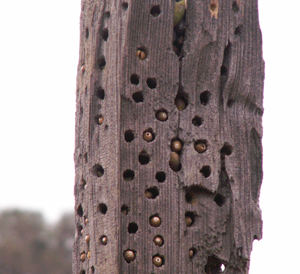 |
|---|
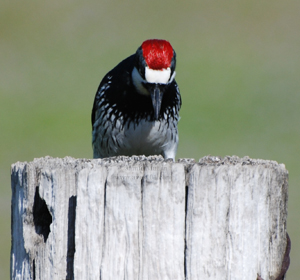 |
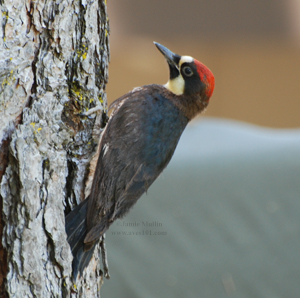 |
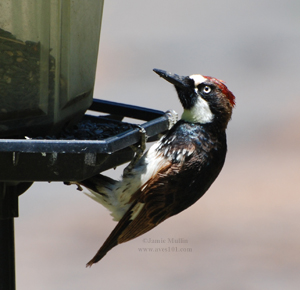 |
 |
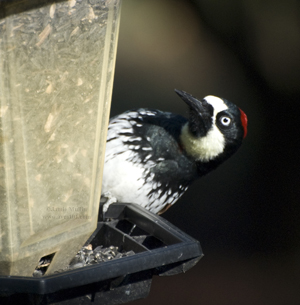 |
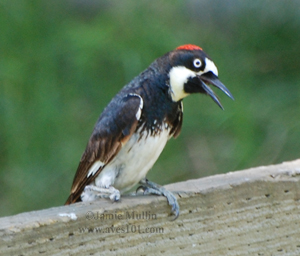 |